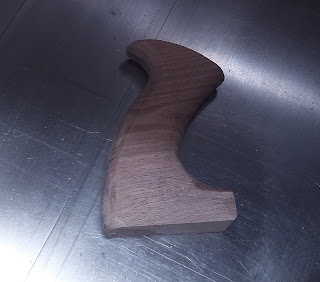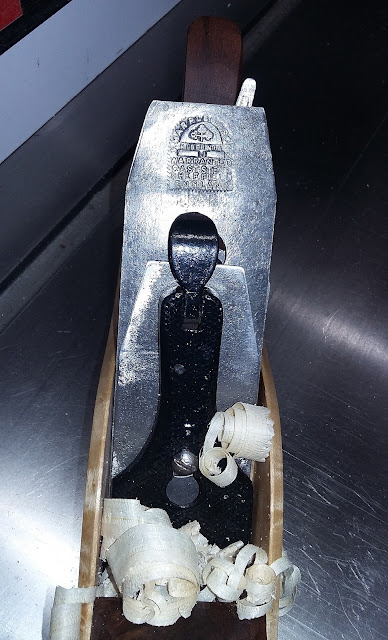Fortunately, a friend recently gave me an old transitional plane, with the iron part of the body broken.
The perfect donor.
Using the paterns in the magazine I made the pattern for the sides....
And the tote.
The sole was cut from hard maple and the mouth was made by drilling out the waste and cleaning up the sides of the opening with a chisel and a final fit after glued up.
I quickly progressed to the glue up as per the instruction in the Magazine.
And soon had a glued up body, with a block of wood in the slot for the tote, this was to keep the slot open to the right size during glue-up. For the front infill I had a piece of highly figured Walnut which was not nearly large enough for the rough size, so I glued up scrap pieces that would be cut away after glue-up.
The sides are made out of Birds Eye Maple.
Here is a look at the tote slot after cutting the body to final size.
And the notch for the Frog to fit into.
Here is the body cut to final size. Shaping the ends to come.
And then gluing the tote into the body.
Here is the finished plane, I gave the wood 4 coats of Danish Oil and 2 coats of Polyurethane.
View from the back.
And it does cut nice and makes nice shavings.
The iron is a NOS VINTAGE WARRANTED SHEFFIELD 2 1/8" PLANE BLADE W MARPLES SHEFFIELD STEEL. I bought this off of eBay from a gentleman at KIBWORTH DIY in England, he had a stock of these irons in the original waxed wrapper.
All in all very happy with the results.




































